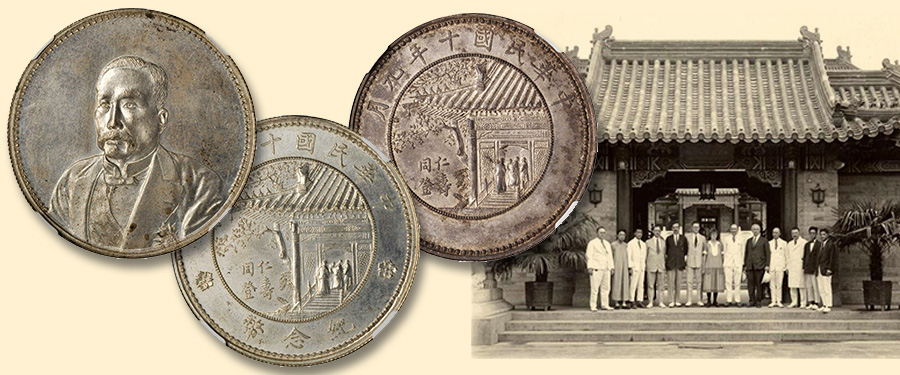
As interaction increased between the western world and the late Imperial/early Republican China, a yearning to modernize Chinese medicine and healthcare caused an influx of both scholarship and funding by the Rockefeller Foundation. Roger Sherman Greene II served as a member of the foundation’s commission and surveyed the state of public health in the new republic, with the China Medical Board being created in 1914 for the improvement of care and the enrichment of medicinal knowledge. This, in turn, led to one of the board’s leading projects, the Peking Union Medical College in 1921. The September 21st issue of New York Times from that year relates some of the details of the newly created institution, in that “…the cost of the building and its equipment totaled $8,000,000, and the college is intended as the nucleus for the scientific medical training of physicians in China, where in the past the practice of medicine has been a matter of tradition rather than of science.” The main benefactor of the project—and the namesake of the foundation itself, John D. Rockefeller, Jr.— was on hand, along with several hundred visitors, for the opening ceremony of the medical college.
Within numismatics, a connection to this institute may have finally been established. The mysterious dollar-sized issues from year 10 of the republic (corresponding to 1921) have long been appreciated within the field. The obverse design features a slightly left-facing bust of President Hsu Shih-chang (Xú Shìchāng), while the reverse design depicts a rather elegantly engraved perspective of what became known in the trade as a ‘pavilion,’ a seemingly idyllic portrayal of local architecture. A major difference in types, however, raised a question as to the true purpose, as some are encountered with three characters below the pavilion translating to “commemorative coin,” while others lack this inscription. What’s more, some of these “blank reverse” types are found with western names engraved instead. One such ‘dollar’ features the engraved name of “MR R S GREENE,” the aforementioned member of the foundation’s commission, while others bear the names of other prominent medical figures associated with the school at the time of its inception. Rather than serving as a pattern dollar for the republic, these issues would instead appear to be commemorative medals issued specifically for the opening ceremony of the institute, with the lower field of the reverse left blank for engraving to be presented to dignitaries. This practice, however, seems to have been abandoned early, as they proved to be poor hosts during the engraving process. A new variant was created, filling the blank space with the previously mentioned three characters—the personalized touch having been cast aside in favor of aesthetics and expediency.
Adding even more to this hypothesis, the overall design of the ‘pavilion’ leaves no doubt as to the edifice meant to be represented. The precise ornamentation on the roof, from the animals on the peaks to the “K” and retrograde “K” designs in the archway, is faithfully executed to capture the façade as it looked in 1921 and continues to look today. What remains uncertain is the four-character inscription, split between two lines, in the reverse field to the left of the ‘pavilion.’ Kann translated the 仁壽同登 as “benevolent birthdays always continue,” though that would seem to be a bit awkward and suspect. An article by Bruce W. Smith in The Journal of East Asian Numismatics (Winter 1995, vol. 2, no. 6) instead suggests a translation of the characters as “perfect virtue increases with age.” Whatever its intended meaning, the role of the iconography as well as the names engraved upon the earlier variety make this association fairly clear.
Our upcoming October Hong Kong auction—our largest such sale to date—will feature a number of these ‘pavilion’ dollars (6 in fact, as well as one incredibly rare offering in gold). Across various grades and designations, collectors of different budgets and collecting pursuits will undoubtedly be satisfied with this incredible array of what is a fairly difficult type to encounter.
To view our upcoming auction schedule and future offerings, please visit StacksBowers.com where you may register and participate in this and other forthcoming sales.
We are always seeking coins, medals, and paper money for our future auctions, and are currently accepting submissions for our official auction of the 2021 N.Y.I.N.C. in January and for our next CCO (Collectors Choice Online) auction in February. If you would like to learn more about consigning, whether a singular item or an entire collection, please contact one of our consignment directors today and we will assist you in achieving the best possible return on your material.





